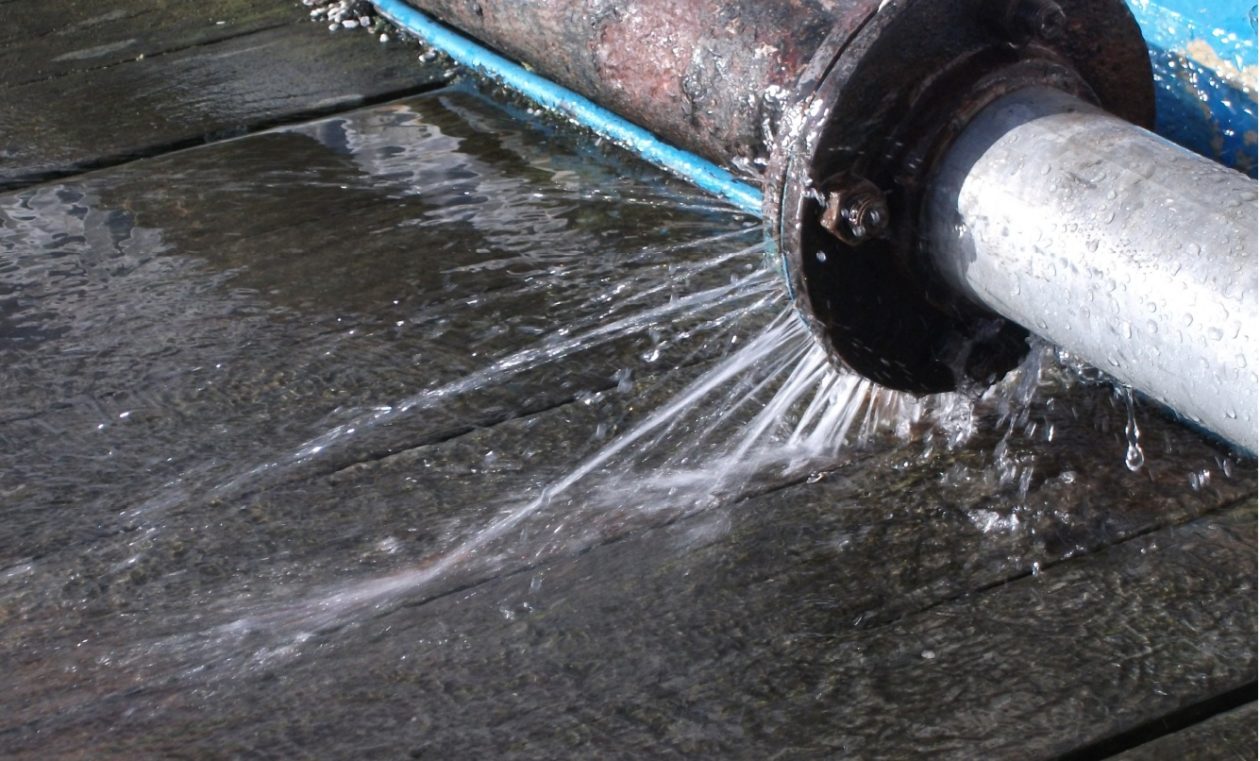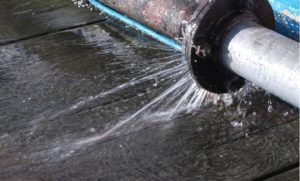
Proper leak detection in a timely fashion with prompt repair is essential to minimizing the damage to your home or  office that leaks can cause. Damage can include cracks in your foundation, cracks in walls and ceilings, damage , drywall, flooring, cabinets, carpet, furniture, and personal possessions.
office that leaks can cause. Damage can include cracks in your foundation, cracks in walls and ceilings, damage , drywall, flooring, cabinets, carpet, furniture, and personal possessions.
Do You Have a Leak?
If you’re not sure if you have a leak, there are many clues that can assist you with leak detection. Here are a few clues that may tip you off.
- Your water bill increases over a period of months, sometimes drastically. Compare a few months’ worth of bills to get an idea of how much water you use on average.
- Your water meter increases even when you are not using any water. One way to check this is to mark an indicator on the meter, then don’t use any water for an hour, then check your meter again. If the indicator has moved, you may have a leak.
- If you hear the continuous sound of water, such as a toilet constantly running, even when nothing is turned on, you may have a leak.
- If your walls or floors are damp, spongy, or have discolored areas from water damage when nothing has spilled, you may have a leak. You may also notice mold, mildew, or moisture in carpeted areas.
- You may notice a foul or mildew smell coming from walls or floors near drain covers or sewer lines.
- If you find warm, moist spots on floors, particularly on concrete floors, you may have a leak.
- If you notice your home’s or building’s foundation cracking, vegetation growing unevenly, or earth shifting or cracking for no apparent reason, there may be a leak nearby.
Leak Detection Around the Home
Trained technicians can determine the location of many water leaks by electronically locating the damaged source, without the need of trial-and-error approaches that typically involve tearing up the property. This can save thousands of dollars in costly repairs and much less disruption to day-to-day activities.
Tubs and Showers
According to The Family Handyman, leaks in tubs and showers are very common as splashing water can escape past a shower curtain or shower door. This type of leak can cause major damage when water seeps into the flooring and subfloor where the floor meets the shower or tub. Tiles or vinyl flooring can start to curl or loosen, and before long, the plywood subfloor can rot. Drain leaks can also allow water past the outside of the drain where it’s connected to the shower pan. Since these materials flex with your body weight, you may eventually break the seal around the drain. Tile leaks can occur when water seeps through deteriorating grout or caulk and gets into the walls behind the tiles.
Look for curling vinyl or loose tiles near the tub, peeling or flaking paint or a chalky looking finish near the shower, water stains on the ceiling below, mold spots on the wall or floor near the tub, or standing water on the floor after you shower.
If you have a shower door, splash water all around the door and frame, and wait five minutes to see if you can spot leaks near the frame. If the door has rubber gaskets or a rubber liner, examine them for gaps. Check for gaps in the caulk where the tub or shower meets the floor as well.
Toilets
Leaks can occur around the floor where the toilet base meets the waste pipe below, allowing water to seep out at every flush. This can ruin the flooring as well as rot the subfloor and joists underneath, damaging any ceilings on floors beneath the toilet.
Look for water seeping around the base of the toilet, loose or damaged flooring, and stains in ceilings below the bathroom. Also take notice if the toilet rocks slightly when you push on it — this movement can break the wax seal between the toilet and flange.
Kitchen and Bathroom Sinks
Leaks often occur in the kitchen and bathrooms around the sink area, including the sink rim, supply leaks under the sink, and drain leaks. Kitchen sink leaks can damage your cabinetry and countertops.
Look for puddles, dampness, or water stains inside cabinets, or loose laminate or tiling near the sink. Also check for a loose faucet base and deteriorating caulk around the sink, as well as any dank smells. If the sink is on an upper floor, check for water stains on the ceiling below.
I Have a Leak! What Now?
Once the leak has been detected, your plumber can discuss, repair options to help you make the best, most affordable decision for repairs. Prompt attention to leaks can save you thousands of dollars later!
We can perform comprehensive leak detection services on your plumbing and recommend the best options based on your budget. We are highly trained with courteous staff and years of experience. Give us a call today.
Write a comment: